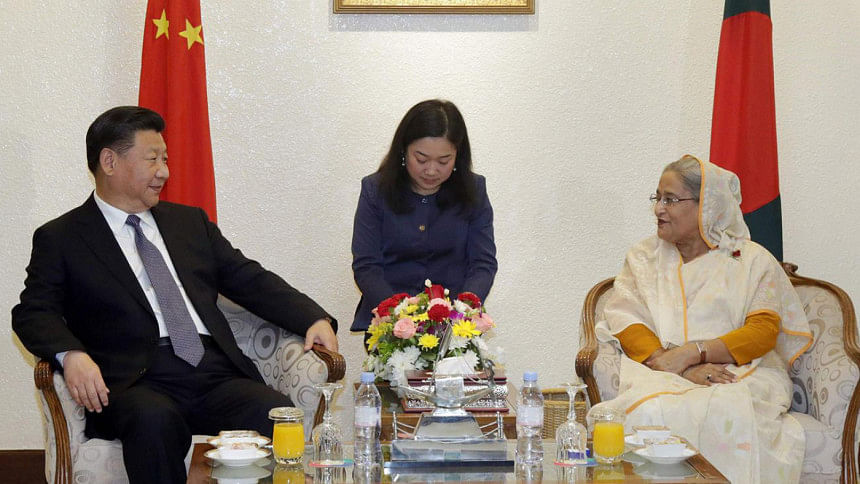Build capacity to utilise Chinese loans

President Xi Jinping's visit was a major diplomatic win for the government of Bangladesh. It has put the spotlight on not just growing economic ties between the two countries, but demonstrates that China now considers Bangladesh to be a reliable partner in its quest to reach new markets. While focus will naturally be on the billions of dollars promised through deals clinched and the Memorandum of Understanding (MoU) signed between the two nations, what is of import is that we have been successful in wooing our largest trading partner to commit to revamping our greatest Achilles heel, i.e. infrastructure.
And what other country besides China is better placed than to help us out? Taking into consideration that China has successfully launched the Asian Infrastructure Investment Bank (AIIB) that is bankrolling some major projects in Asia including, most recently, a hydropower extension project in Pakistan worth USD 300 million and a USD 20 million loan to finance a 225 megawatt Combined Cycle Gas Turbine which will be the largest gas fired Independent Power Plant in Myanmar, it is natural that we have turned to China to help us make up the chronic deficits we have faced over the years on infrastructure bottlenecks.
We have seen more than a dozen joint venture plans inked during the visit totalling USD 13.6 billion that will boost trade between the two nations. There have been calls from the private sector for the formation of a committee that will be headed by the Bangladesh Investment Development Authority (BIDA) and where private sector representatives will hold positions. The concern here, as pointed out by business chambers is to what extent we may successfully negotiate the execution of the deals that will be beneficial for both China and Bangladesh.
Details are not yet forthcoming on the numerous agreements and MoU signed but the amounts hover around USD 40 billion. While the hype has been focused on the figures, it remains to be seen whether the MoU can successfully be translated into contracts. We have a history of signing MoUs which have not materialised into quantifiable contracts and the proof of the pudding will be in real contracts. The real work actually begins now between the negotiating teams of both countries. At what cost will we be availing loans? The test will come in our ability to clinch deals that offer loans that are concessional. Otherwise repayment will be very expensive in the long run. As pointed out recently by Executive Director Ahsan H. Mansur, Policy Research Institute, "China has committed nearly $40 billion for Bangladesh. We need to negotiate effectively for the fund, but at the same time, we have to keep in mind whether we have the capacity spend the huge fund or not. Yes, we have the need for infrastructure. But the issue is whether we are ready or not. Do we have ready information on the cost of the fund?"
Bangladesh has promised a special economic zone for Chinese investment. It is imperative that work is prioritised on the zone because one of the major problems we have been facing is the high cost of doing business. With the Chinese president's visit, attracting foreign direct investment from prospective Chinese companies is no longer the problem; rather it has everything to do with our capacity to address the deficiencies in our institutions, most notably, infrastructure. The time we take to get our facilities ready is inordinately long – from land acquisition to getting utilities online, obtaining necessary permits all point to a very cumbersome bureaucratic process. These are the other "bottlenecks" that have effectively held back Bangladesh and hundreds of prospective foreign investors have come and left and MoUs never transpired into anything concrete.
Bangladesh is at a crossroads. We have had sustained GDP growth rates of 6 percent or more for many years and the opportunity to take it higher was always held back due to chronic infrastructure inadequacies. The USD 40 billion bonanza offered by China, that is second only to Pakistan (USD 46 billion) and much higher than India's USD 20 billion, has the potential to radically transform the economic backbone of the country. The ball is in our court. How we negotiate the terms of the financial package on the table and how swift we move on deliverables on our side will set the pace for that transformation.
The writer is Assistant Editor, The Daily Star.

 For all latest news, follow The Daily Star's Google News channel.
For all latest news, follow The Daily Star's Google News channel. 



Comments